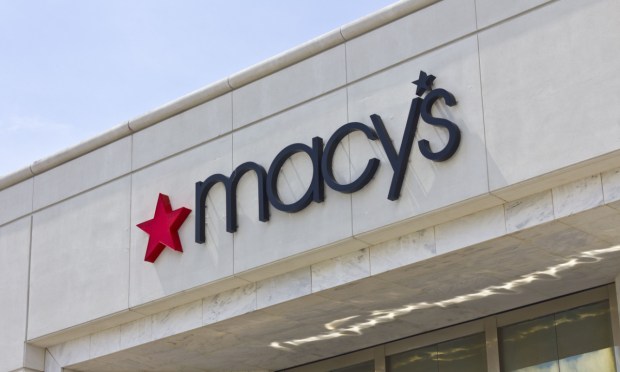Macy’s Navigates Weak Consumer Demand, Continues Deep Discounts

Earlier, PYMNTS reported that the summer of markdowns is here as Macy’s (along with Dollar General) struggled with declining consumer demand. The retailer has now revised its annual sales and profit forecasts downward, citing a deceleration in demand caused by inflation as the primary factor.
“We planned the year assuming that the economic health of the consumer would be challenged, but starting in late March, demand trends weakened further in our discretionary categories,” Macy’s Chairman and CEO Jeff Gennette said in a Thursday (June 1) press release announcing the retailer’s first-quarter earnings.
Read more: Macy’s and Dollar General Results Show Inflation’s Bite Is Far-Reaching
According to Gennette, Macy’s has taken measures to meet the current consumer demand and effectively manage expenses. That said, the revised guidance takes into account additional clearance markdowns in the second quarter to address excess inventory, as well as adjustments to category composition and inventory levels in the latter part of the year.
Macy’s achieved a first-quarter gross margin of 40%, showing a slight increase from the previous year, thanks to promotional controls and cost management strategies. This accomplishment, coupled with exceeding profit expectations, led to the retailer’s decision to offer additional discounts in the upcoming quarter in order to clear out excess spring and summer inventory.
Following the release of the results, the company’s shares initially experienced a significant decline, dropping by as much as 12%. However, the stock managed to recover some of its losses and was down by 5% during morning trading.
Gennette said the pullback by U.S. consumers, particularly at Macy’s stores, was more significant than anticipated. In the face of inflation, customers redirected their spending toward essential items such as food and services, resulting in reduced sales for the company.
Macy’s has revised its sales forecast for 2023, expecting it to range between $22.8 billion and $23.2 billion — a downward adjustment from the previous forecast of $23.7 billion to $24.2 billion.
Not All Retailers Feel the Inflation Effect
Nordstrom and Kohl’s, two fellow department store retailers, delivered positive news to investors as they reported quarterly profits that surpassed expectations. The strong performance was credited to their effective strategies in managing inventory. Encouragingly, both companies also maintained their annual forecasts, signaling a positive outlook for their future performance.
Despite being criticized in the previous quarter for its strategy of excessive discounting, Nordstrom showcased its resilience on Wednesday (May 31) by reporting an unexpected quarterly profit and exceeding revenue expectations. The company attributed its success to enhanced inventory management and heightened demand from affluent customers.
“We are pleased with the progress we’re making against the key priorities we laid out for 2023 as we continue to enhance our overall customer experience, improve Nordstrom Rack performance, increase inventory productivity and optimize our supply chain operations,” Nordstrom CEO Erik Nordstrom said. “We’re encouraged by our momentum, especially given the uncertain macroeconomic environment. We remain focused on executing with agility and delivering long-term value to our shareholders.”
After the announcement of its financial results, the department store saw its shares surge 9.4% during extended trading. Notably, the company not only maintained its sales and adjusted profit forecasts for 2023 but also highlighted a positive sales trend at its off-price Rack banner.
See also: Nordstrom Defies Retail Slump With Surprising Quarterly Profit and Strong Revenue Growth
Kohl’s Sees in-Store Revival
Demonstrating the continued resilience of the in-store experience, Kohl’s showcased an improvement in its first-quarter performance compared to the previous year. The company is now focused on further enhancing its physical stores, with a notable commitment to self-checkout options.
During an earnings call with investors and analysts on Wednesday (May 24), Kohl’s CEO Tom Kingsbury, who assumed the role in February following a disappointing Q4 2022, detailed a range of initiatives that the retailer prioritized during Q1 and intends to further develop throughout the year.
According to Kingsbury, the growth in in-store traffic and higher units per transaction outweighed the impact of lower average ticket values resulting from clearance actions. However, Chief Financial Officer Jill Timm highlighted that despite store sales showing a low single-digit percentage increase, net sales declined by 3.3%. This decline was primarily attributed to a significant drop of 19.6% in digital sales compared to the previous year. The growth in store sales was driven by the strong performance of Sephora at Kohl’s and the implementation of clearance strategies.
See: Kohl’s Digital Sales Drop Nearly 20% in Q1 as Sephora Helps Improve In-Store Results
Macy’s Is Not Alone as Retailers feel Inflation Squeeze
Like other major retailers including Target and Home Depot, Macy’s has adopted a cautious outlook due to the continued strain on American consumers’ disposable income. Both retailers also cited major shrinkage during their earnings reflections.
See also: Rising Organized Retail Theft Puts Pressure on Profits for Major Retailers
For all PYMNTS retail coverage, subscribe to the daily Retail Newsletter.
